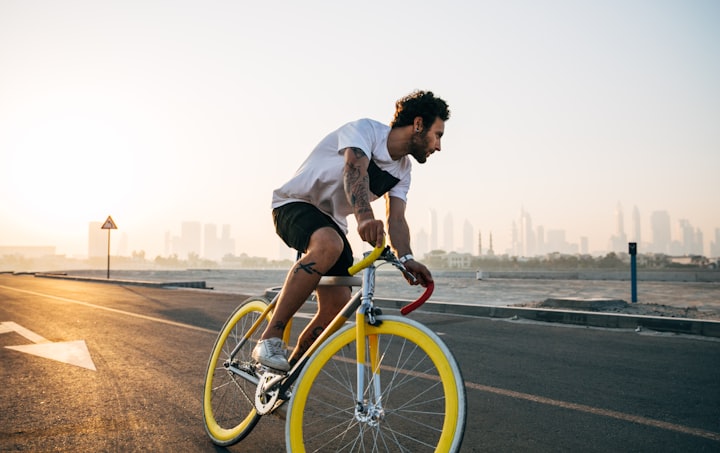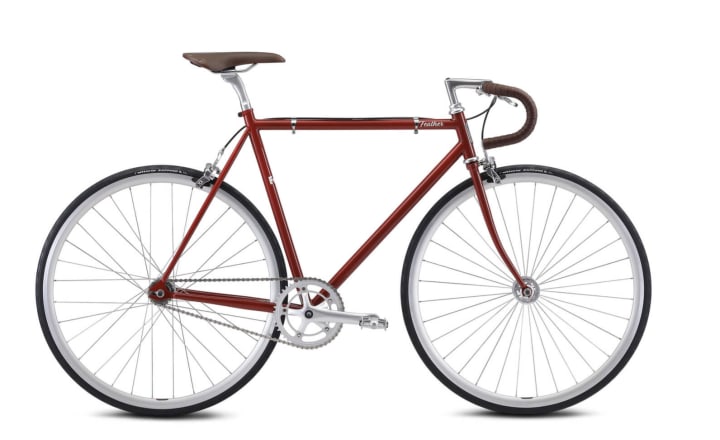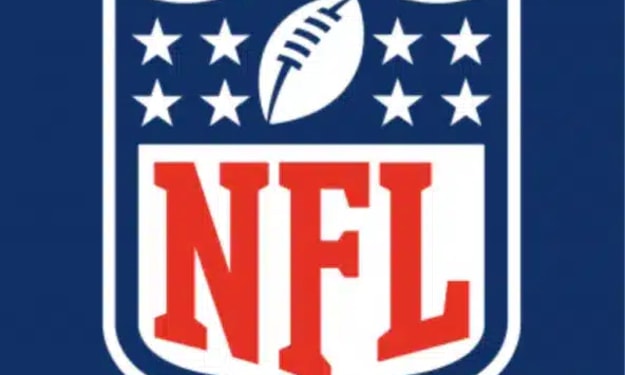5 Revealing Ways to Spot Bad Beginner Fixed Gear Bikes
Avoid wasting your money and get a good fixed gear.

Have you been shopping for beginner fixed gears? Here’s how to spot bad ones.
Most bad beginner fixed gear bikes prey on beginner riders that don't know much about bikes, and I'm here to protect you from wasting your money on these bikes and get you on a bike that will put a big, stupid smile on your face every time you ride it.
By far the most common question I get as the internet's go-to fixed gear and singlespeed bike guy is "what beginner fixed gear should I buy for around $400 or less? Is X, Y, or Z fixed gear a good beginner bike for the money?" Statistically speaking, probably not, and you can skip to the end of this article to see my top 3 picks for beginner fixed gear bikes that are worth your hard-earned money if you're trying to get through this article faster than a roadie with a tailwind going for a KOM (King of the Mountain: the fastest time on a Strava segment. Don't worry you'll learn all the cycling lingo soon enough).
The reality is, there's a lot of bad bikes in the beginner fixed gear segment. When I say "bad bikes," I mean bikes that cost way more than they should, are not as fun to ride as other bikes in their price range, and not as reliable. Here's the 5 most revealing ways to spot bad beginner fixed gear bikes.
5. Colorful Fixies
The easiest way for a bike company to convince a beginner rider that their bike is worth a high price is by focusing on how cool their bikes look. Companies selling bad beginner bikes often hide their products' low quality with color options and emphasize how cool their bikes look rather than how fun they are to ride or how reliable they are.
"This bike is purple with white wheels, and that's my favorite color combination, so of course I'll pay $449 for it!" -beginner rider that didn't do their research
They also hide their lack of quality with the sheer number of color options as beginners are more likely to choose a bike based on color rather than technical indicators of quality like geometry, fit, and quality components. Vast color options and giving each color scheme special names gives the illusion of choice when all of the bikes are built with the same exact low quality components that aren't fun to ride and will have expensive issues within a year of purchase.
Good bikes tend not to offer as many color combinations since they focus on giving you higher quality, reliable parts for your money rather than a bike that would best compliment your H&M scarf. Let it be a bike first and a fashion accessory second.

4. No Geometry Chart
Although technical information may be overwhelming to a beginner, if a company hides crucial information like geometry charts and specs sheets that would tell you exactly what you're buying, it's a telltale sign that a company is trying to cover up for their products' lack of quality
Geometry charts show the exact dimensions of a frameset's design and are crucial for the most important aspect of buying a bike: fit. Buying a bike is like buying a suit; it needs to fit you right if you want to enjoy it. Getting a bike that's the wrong size, even within a few centimeters, can be painful and lead you to never want to ride it, while a bike that's the right size is comfortable, fun, and can lead you to a lifetime of enjoyable cycling.
Getting the right fit is so important, I'll say this again: fit is THE MOST important aspect of buying a bike, and you can't get the fit right if a company doesn't provide a geometry chart.
For companies selling bad beginner bikes, getting bikes out the door as fast as possible is more important than allowing customers to get on bikes that are right for them. To give the illusion that you're getting the right bike for you, they often provide grossly oversimplified guidelines that tell you to buy a bike solely based on your height and inseam. These two measurements are certainly important for bike fit, but they're far from enough. Buying a bike based on only height and inseam is like buying a three-piece suit based on only your pant size: the lower half might fit, but your upper half will probably be uncomfortable and look like a sweaty schlub.
If you're buying a bike online, you need to take some measurements yourself to get a properly fitted bike. Check out this guide I made for buying a bike online. As always though, going to a reputable local bike shop would be best for getting on a properly fitted, reliable bike that you'll enjoy. Cycling is an intimate experience. No matter how many hours you spend reading and watching bike reviews, nothing beats getting to know a bike with your own hands, legs, and butt.
3. No Parts List or Total Weight
Often, bad beginner fixed gear bikes will not include parts lists for their bikes, or if they do, you can see how low quality they are with all the cheap, generic components they use. They may also not post a weight for the complete bike. A good beginner fixed gear will weigh between 20-22 lbs (9-10 kg), and the company will usually post that weight as an indicator of quality. Bike weight is one of the hottest topics in cycling, so if a company doesn't post the weight of a complete bike, you can safely assume they're intentionally hiding it from you.
2. Deep Dish Wheels
Colors are the easiest aspect of a bike for beginners to latch on to since customizability is one of the draws of fixed gear riding. Bad beginner fixed gear bikes exploit this tendency with flashy, colorful deep dish wheels that offer little benefit other than looking cool enough to snag a quick sale.
Wheels shouldn't be judged on color but on performance, weight, and durability. Speaking from my experience of reviewing and riding dozens of fixed gear bikes, these deep dish wheels that come on bad beginner bikes are heavy, sluggish to ride, and unreliable. They usually come with loose ball bearing hubs that need to be serviced after about six months of regular riding (which either requires knowledge and tools or a trip to the bike shop) lest they feel crunchier than a bag of Fritos to ride, and they tend to come out of true and wobble often since they're poorly built.
Beginner fixed gears that are worth your money will have maintenance-free sealed bearing hubs that will run smoothly practically forever and medium or low-profile rims that have a nice balance of low weight and high durability.
Yes, cheap deep dish wheels look cool to the beginner eye, but they're a big pain in a** to ride and maintain. If you find the look of the wheels irresistible, get a reliable beginner bike, and upgrade the wheels to a set of Velocity Deep V's. Those are actually reliable and fun to ride while looking even more dope.

1. High Tensile Steel Frame and Fork
Bad beginner fixed gear bikes tend to be made out of high tensile steel, also referred to as hi-ten steel, since it's the cheapest material to build a bike out of, aside from rusty lawn chairs. Hi-ten steel bikes tend to be heavy and sluggish to ride, especially when getting the bike up to speed from stops or when riding uphill, if you can even pedal these lead tanks of bikes up a hill. Since bad beginner fixed gears tend to be made as cheaply as possible, the welding at the joints may look sloppy and uneven.
Higher quality beginner fixed gears will be made out of 4130 chromoly steel or Reynolds 520 steel (which is just a brand name version of 4130 chromoly). 4130 chromoly steel makes for lighter bikes that are still durable and a ton of fun to ride. It's so fun to ride that even my fancy-pants enthusiast level (read: "expensive") Wabi Special is made out of chromoly steel, albeit a high-end version. The welded joints on a bike are a telltale sign of quality, and any bike worth your money should have tidy welds that look like a stack of dimes.
Higher quality bikes also tend to come with lugged forks while cheaper bikes tend to come with unicrown forks. There's nothing functionally wrong with unicrown forks, but nicer bikes tend to have lugged forks as another indicator of quality. Although they're both functionally the same, lugged forks are more expensive to produce and can be a sign that you're getting a better bike for the same money.
You Get What You Pay For (Sometimes Less)
If you're looking for a fixed gear bike that'll put a big, dumb grin on your face every time you ride it, you should look for bikes that are reliable and give you value for your money, not necessarily the ones that come in your favorite colors, as tempting as that is. With that said, customizing your bike is one of the most fun aspects of riding fixed gear, but you shouldn't let color options dictate your first bike choice. If it turns out you like fixed gear riding, you can always customize your bike with high-quality, reliable parts later. Instead, what you need for your first bike is a solid foundation that will allow you to learn what you like and grow as a cyclist.
The sweet spot for off-the-shelf beginner fixed gears is around $400-600. Cheaper bikes are likely going to have reliability issues and require you to take them to the bike shop for repairs, making them cost more than they're worth in the long run all while not being as fun to ride as a good beginner fixed gear. In the bike world, you get what you pay for, and unfortunately, less if you don’t do your research.
Some bikes in the $400-600 price range check off a lot of our most revealing signs of bad beginner fixed gears and should cost only half as much as they charge. To make things simple for you, here's my top 3 picks for beginner fixed gear bikes.
*I am not sponsored or affiliated with these companies in any way. These bikes strike a balance of being reliable, fun bikes for your money and being the most readily available worldwide.
Top 3 Dope Beginner Fixed Gear Bikes:
State Bicycle Co. is interesting in that they make both bad beginner fixed gears and good beginner fixed gears; GOOD THING SPOTTING THE DIFFERENCE BETWEEN THEM IS SUPER EASY AND NOT CONFUSING AT ALL (SARCASM). Their regular "Core Line" are their bad beginner fixed gears while their "4130 Core Line" are good bikes. The 4130 Core Line ticks a lot of the boxes for a fun to ride and reliable fixed gear. State Bicycle Co. is infamous for quality control issues though, so I recommend only buying one from a local bike shop and avoid buying one online unless one of your hobbies is jumping through hoops to talk to a customer service representative to resolve an issue that never should have happened in the first place (the review bike they sent me was bent out of alignment, yikes!).
State 4130 Core Line Review:
Fuji is one of the largest bike manufacturers in the world, and because of that, they can give you a pretty good beginner fixed gear at a decent price. Fuji Feathers tend to be too expensive at full MSRP, but they frequently go on sale at local bike shops since Fuji comes out with a "new" Feather model every year that's the exact same bike, just with a different color. This means you can get a Feather at a great price of around $400-500 if you shop around.

The Kilo TT has reigned supreme as the best beginner fixed gear bike for the last 13+ years with a big asterisk: *it's only available in the United States. For a second big asterisk: *they recently increased the price by 25% from $400 to $500 due to increased demand and COVID ruining everything from your life plans for past 1-2 years, the global supply chain and economy, and Thanksgiving conversations with your anti-mask, anti-vax aunt (true story). Even with the recent price increase, the Kilo TT is still a dope beginner fixed gear. Just keep in mind that they tend to have inconsistent tire clearances, meaning if you want to try bigger tires in the future, they may not fit. The website also looks like a virus-riddled website straight out of the 1998, but I’ve ordered multiple bikes from them and they actually arrived, so don’t sweat it; they’re legit. The Kilo TT is so good, I used to ride one, and I loved it.
Armed with this information for not getting blatantly ripped off, you're now one step closer to getting your first fixed gear and enjoying a lifetime of big, dumb grins on your face as you whip skid off into the sunset.
Pure Cycles Premium vs. Mercier Kilo TT Pro:
Ride on,
Zach Gallardo
*any links to Amazon and eBay are affiliate links meaning I make a small commission from anything you buy at no additional cost to you. Thanks for your support!
About the Creator
Zach Gallardo
Fixed Gear Cycling YouTuber, Reasonably Dangerous Hooligan






Comments
There are no comments for this story
Be the first to respond and start the conversation.